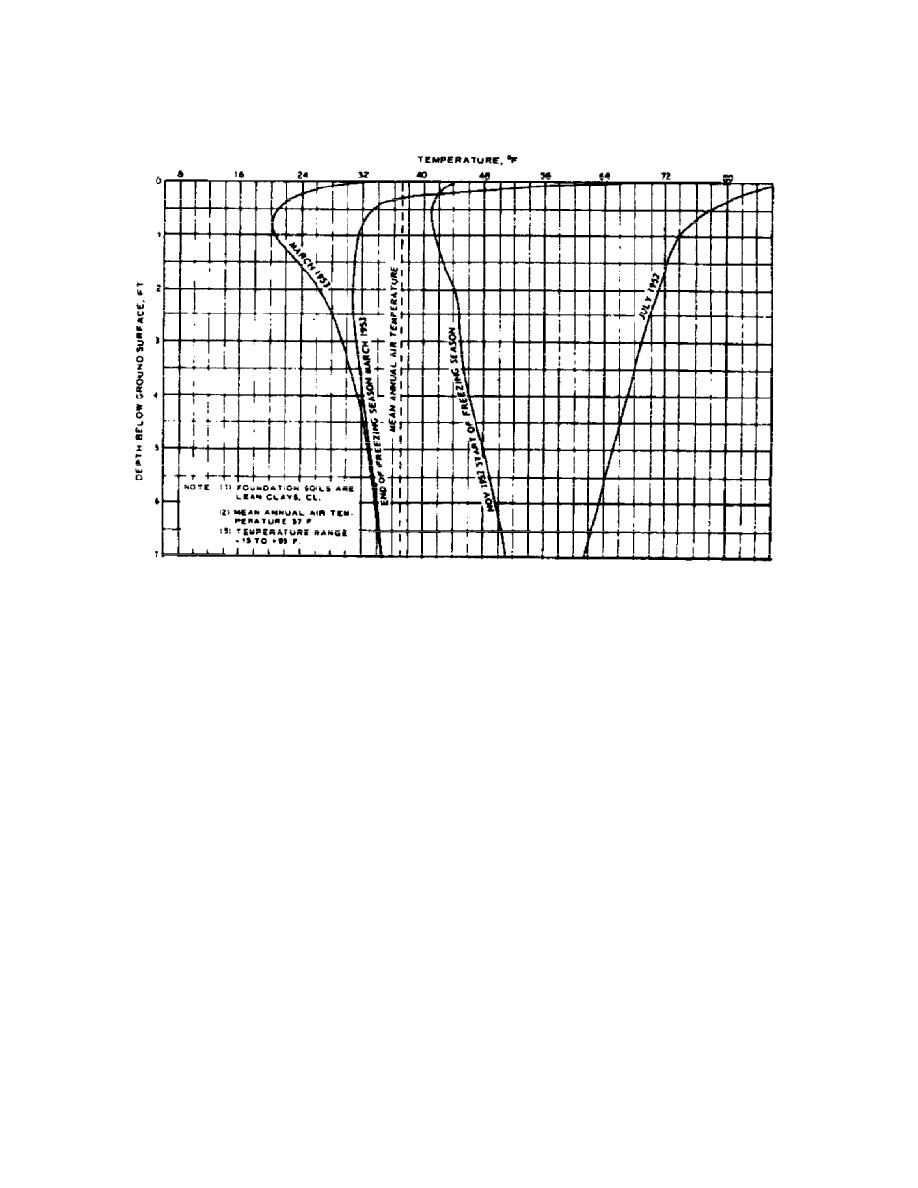
UFC 3-220-01N
15 AUGUST 2005
Figure 11-3 Ground Temperatures During Freezing Season in Fairbanks, Alaska
11-2.3.2
Ice. Ice that is present in the ground in excess of the normal void space is
most obvious as more or less clear lenses, veins or masses easily visible in cores, and
test pits or excavations, but it may also be so uniformly distributed that it is not readily
apparent to the unaided eye. In the annual frost zone, excess ice is formed by the
common ice segregation process, although small amounts of ice may also originate
from filling of shrinkage cracks; ice formations in this zone disappear each summer.
Below the annual frost zone, excess ice in permafrost may form by the same type of ice
segregation process as above, may occur as vertical ice wedges formed by a horizontal
contraction-expansion process, or may be "fossil ice" buried by land slides or other
events. Although most common in fine-grained soils, substantial bodies of excess ice
are not uncommon in permanently frozen clean, granular deposits. The possible
adverse effects of excess ice are discussed in paragraph 11-4.1.1.
11-2.3.3
Rock. Bedrock subject to freezing temperatures should never be
assumed problem-free in absence of positive subsurface information. In seasonal frost
areas, mud seams in bedrock or concentrations of fines at or near the rock surface, in
combination with the ability of fissures in the rock to supply large quantities of water for
ice segregation, frequently cause severe frost heave. In permafrost areas, very
substantial quantities of Ice are often found in bedrock, occurring in fissures and cracks
and along bedding planes.
11-2.4
Water Conditions
11-6



 Previous Page
Previous Page
